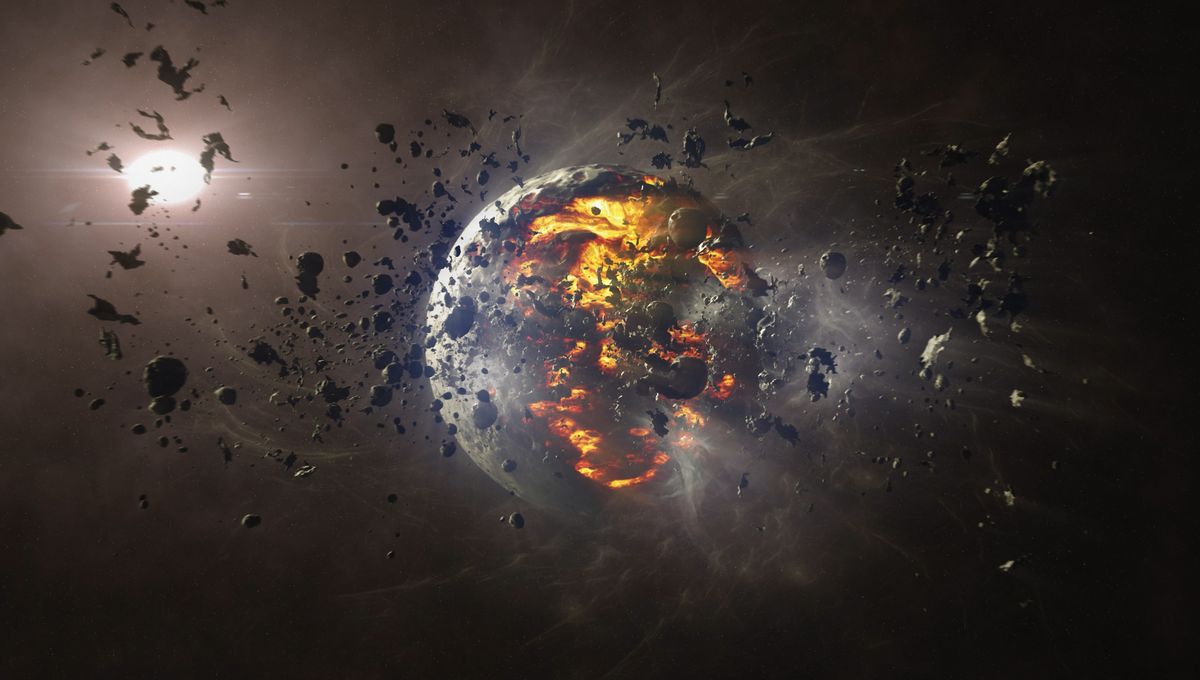
The Sun and other stars seldom get near each other. It is estimated that a close passage – closer than 15 billion kilometers (9.3 billion miles) – happens once every 100 billion years, which is more than 7 times the current age of the universe. Due to the evolution of the Sun, the Earth has about one billion years more of having a habitable surface. This gives us a 1 percent chance of a stellar encounter as long as there is life on Earth. But what would a rogue star bring to our solar system? Everything from complete destruction to very little effects.
Researchers have looked into various possible encounter setups, and it is good to know that in 95 percent of the cases, the passage results in no planets being lost. But in that remaining five percent, havoc is the key word. In the remaining 5 percent of scenarios, almost half see Mercury being put into an orbit that leads it to collide with the Sun.
Previous research has shown that even a 0.1 percent perturbation on Neptune’s orbit could cause Mercury to become a pinball (likely hitting Venus, but Mars and Earth are also possible targets). New work shows that the effects of tiny variations in orbits can be truly catastrophic.
“While the orbital evolution of the planets is largely determined by secular and resonant perturbations, passing stars can have a consequential influence on the planets’ orbits,” the authors write in the paper.
With a 1.21 percent and 1.17 percent chance respectively, there’s the scenario of Mars ending up on a collision course with the Sun, and that of Venus colliding with another planet. Those are followed by the lower likelihood scenarios of the ejection of Uranus, or Neptune, or the scenario where Mercury hits another planet.
Looking further down the list of scenarios in descending probability, we also see Earth being pushed on a collision course with another planet (0.48 percent) while the chance that Earth is going to be flying into the Sun is about 0.24 percent. There are plenty of other scenarios, some with more chaos than others. Collisions are more common for the inner rocky planets, while ejections are more common for the outer ones (except for Jupiter).
There is an even tiny chance that Earth would be thrown into a much wider orbit, trapping our planet in the frigid Oort cloud, but still bound to the Sun. There are small but roughly similar chances across all planets of capture by the passing star. It could be possible for Earth to end up in the habitable zone of a different star and prolong its habitability for longer than one billion years. But that escape might spell doom for the other planets.
“Despite the diversity of potential evolutionary pathways, odds are high that our Solar System’s current situation will not change. Earth’s progressive heating from the brightening Solar luminosity (not to mention human-driven carbon emissions) will continue unabated. The Universe is statistically unlikely to help us out by providing a stellar flyby that will lead to a cooler Earth. Humanity’s best solution is to help itself,” the authors conclude.
There are also 392 scenarios out of 12,000 simulations where all but one planet die; the most common survivor is Jupiter (also in other likely deaths of the solar system) – but 23 scenarios see Earth as the sole survivor. But all these have ignored a big factor for our planet: the Moon. Once the Earth-Moon system is taken into account, the chances for devastation on our dear old Earth increase simply because, with the addition of the Moon, we are a bigger target. But even with that risk factor, the odds of such a cataclysmic scenario remain very small indeed.
The paper is accepted for publication in the Monthly Notices of the Royal Astronomical Society and is available on the ArXiv.
[H/T: Universe Today]
Source Link: The Solar System Vs A Passing Star – What Are The Odds Of Survival?